Auction Pick of the Week: 1931 Cadillac Series 370A V-12 Phaeton
During the Roaring Twenties, high-end car manufacturers were in a cylinder-number arms race to attract buyers. More cylinders meant more, smoother power. Cadillacs only had V-8s at the time, so in order to keep up with the competition, development started on a line of new V-12 and V-16 engines in 1927. The new models powered by these engines would be the pinnacle of Cadillac. Just as the development of these new powerplants was finishing up in late 1929, the stock market crashed, sending the economy into a tailspin.
The Cadillac V-12 and V-16 were introduced in 1930. Oops.

If you have an appreciation for prewar excess or bad timing, check out our Hagerty Marketplace Auction pick of the week, this stunning 1931 Cadillac Series 370A V-12 Phaeton.
In reality, most people who were able to afford a new Cadillac around the time of the Great Depression didn’t feel its effects the way the working class did. Nevertheless, it was still an era of belt-tightening, and even the rich had to curb some aspects of their extravagant lifestyles. The Cadillac Series 370 V-12 far outsold its more expensive V-16 counterpart.
The 370 suffix denoted the V-12’s 370 cubic inches of displacement, while the A signifies an early model. From that voluminous displacement, the twelve channels 135 horsepower through a three-speed synchronized manual transmission.
Like a lot of high-end prewar cars, the Series 370A could be had with a variety of custom and semi-custom bodies, with the standard models being designed by a young Harley Earl.
Our featured car has a Phaeton body by Fisher (one of Cadillac’s in-house coachbuilders at the time) draped over a 140-inch wheelbase. The term Phateon is taken from the pre-automobile era, where it referred to a dangerously fast, lightweight, four-wheeled carriage. The term was then adopted by car manufacturers to mean a sporty four- or five-passenger automobile with a convertible top. Other exterior touches include dual side-mount spare wheels, a radiator stone guard, and a goddess hood mascot.
The two-tone maroon-and-white paint presents well, but it’s not perfect. This car was restored in the late 1990s, and there’s a minor scratch on the front bumper on the passenger side, a minor paint crack in the passenger front fender below the spare, a paint chip in the rear passenger corner pinstriping, and flaking paint on the lower passenger corner of the trunk. But this beast should be driven, not locked up in a museum.
These cars cemented Cadillac as the “Standard of the World.” Don’t miss out on this piece of prewar history. Bidding ends on Tuesday, May 30, at
4:20 p.m. EDT.

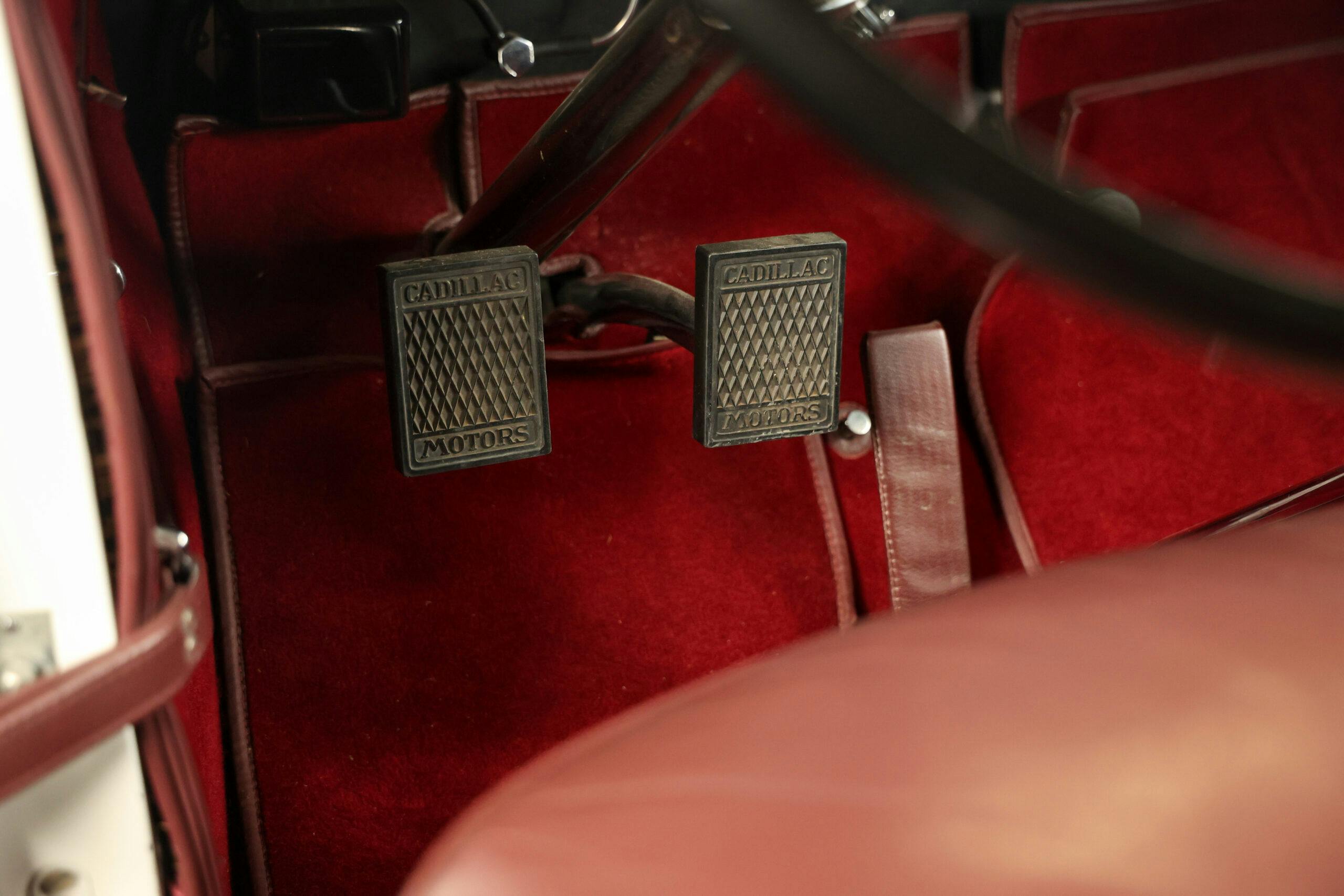
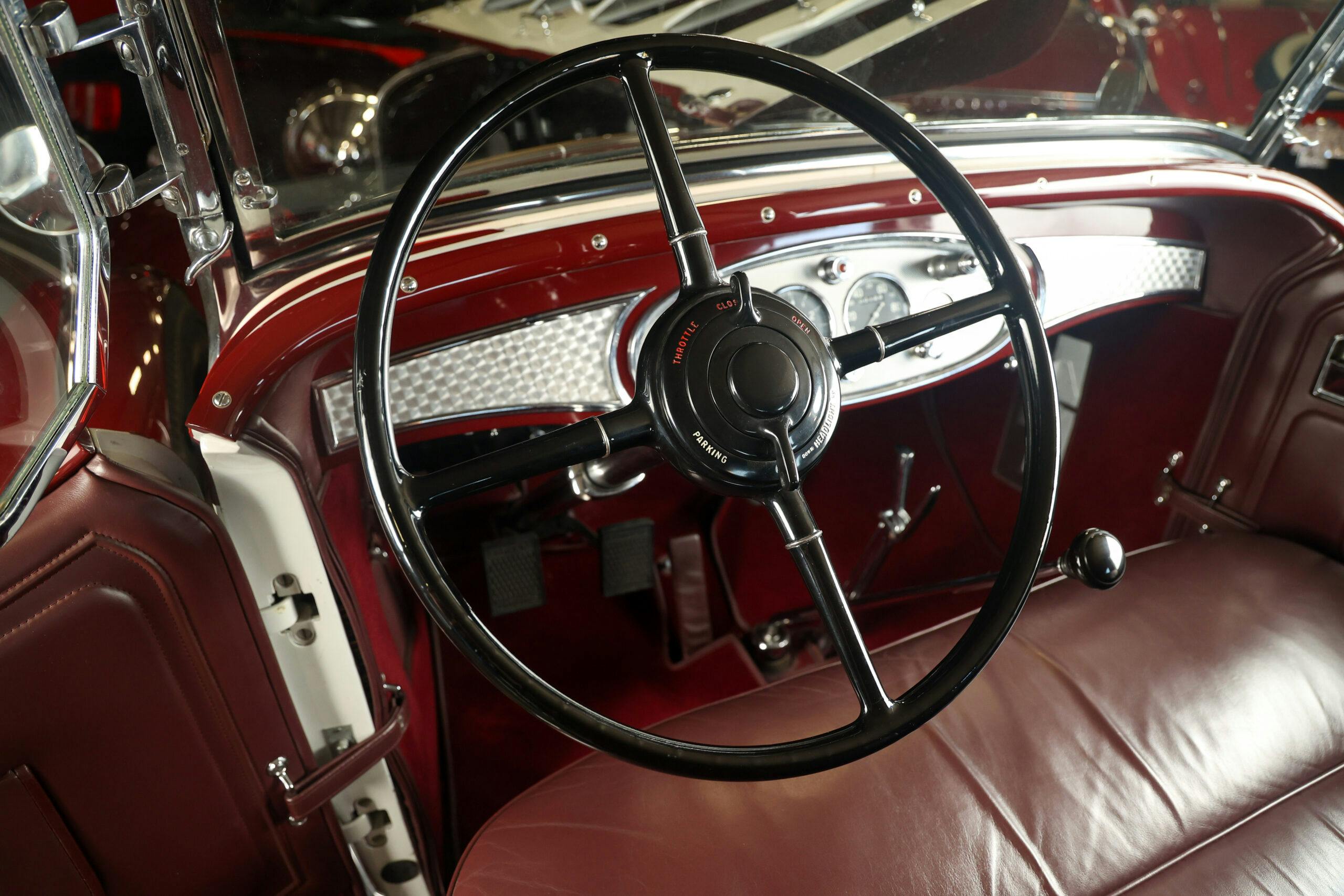
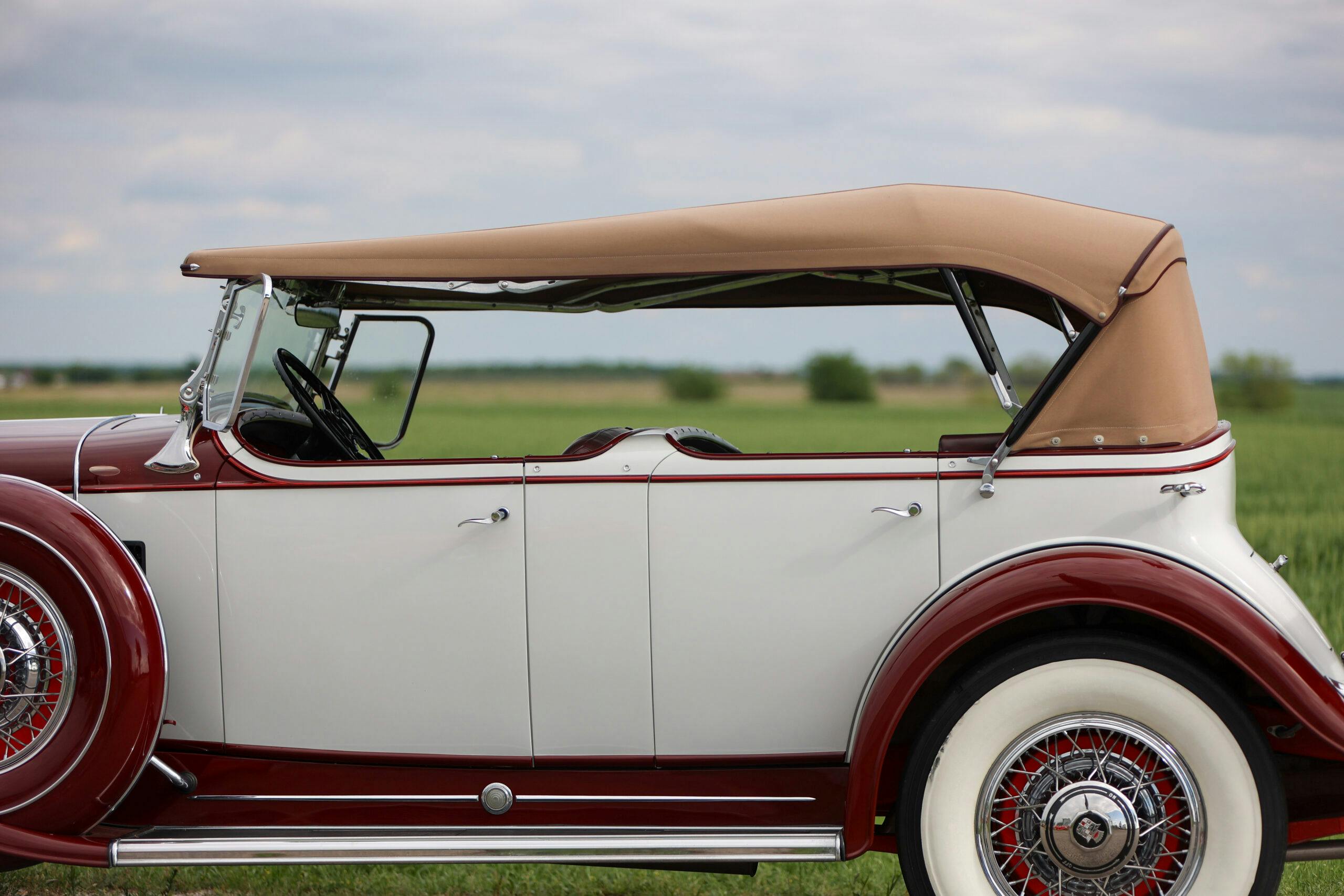
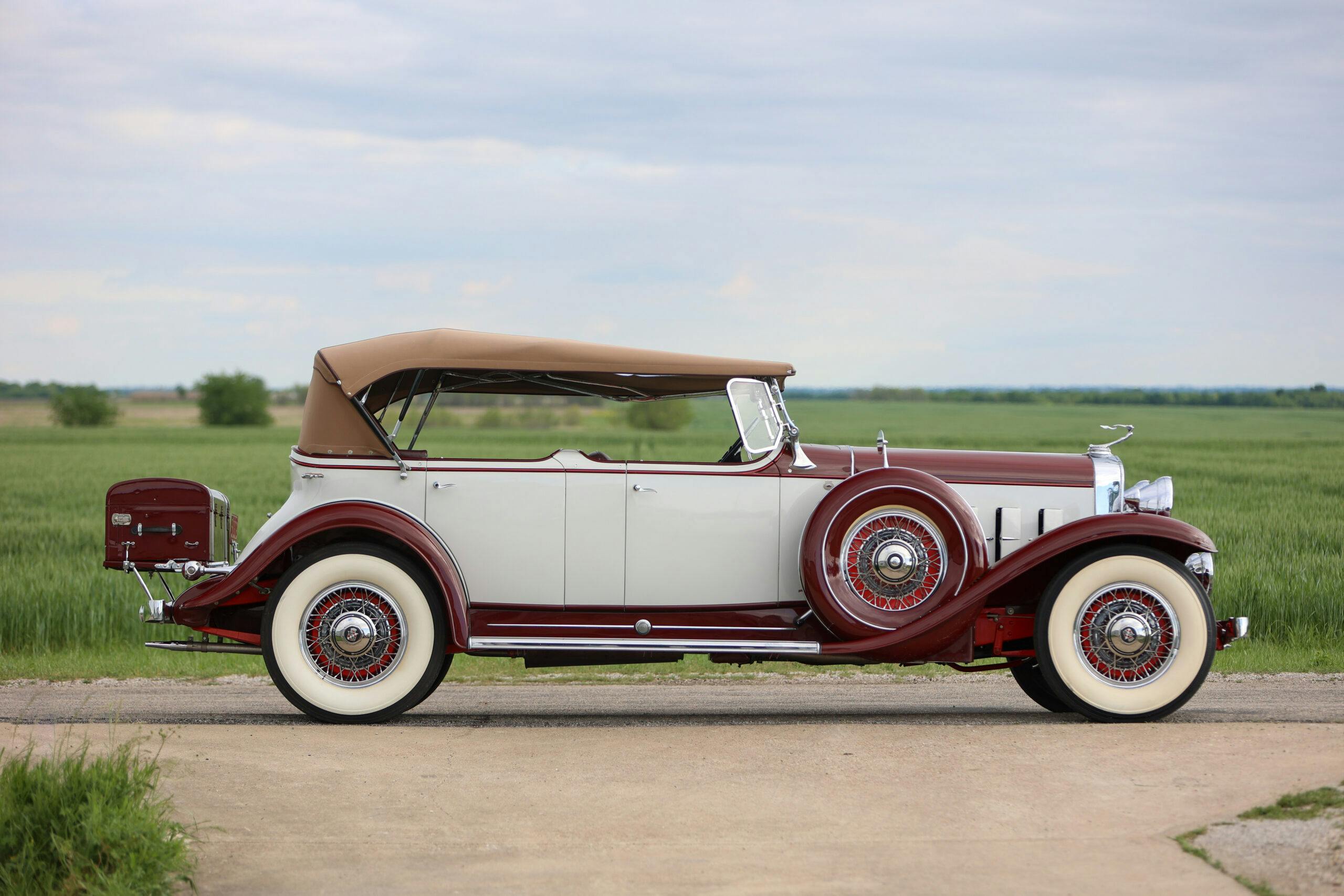

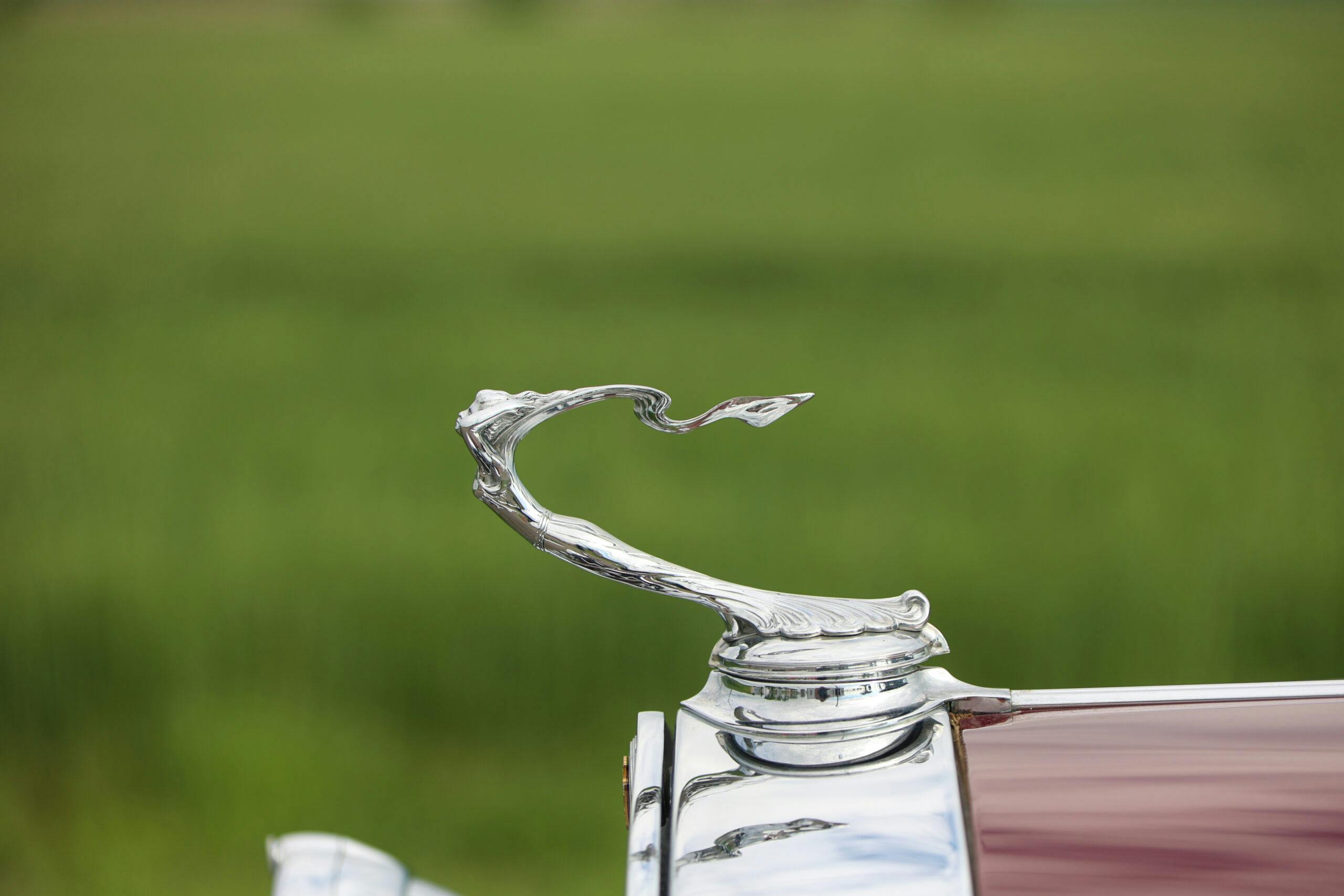

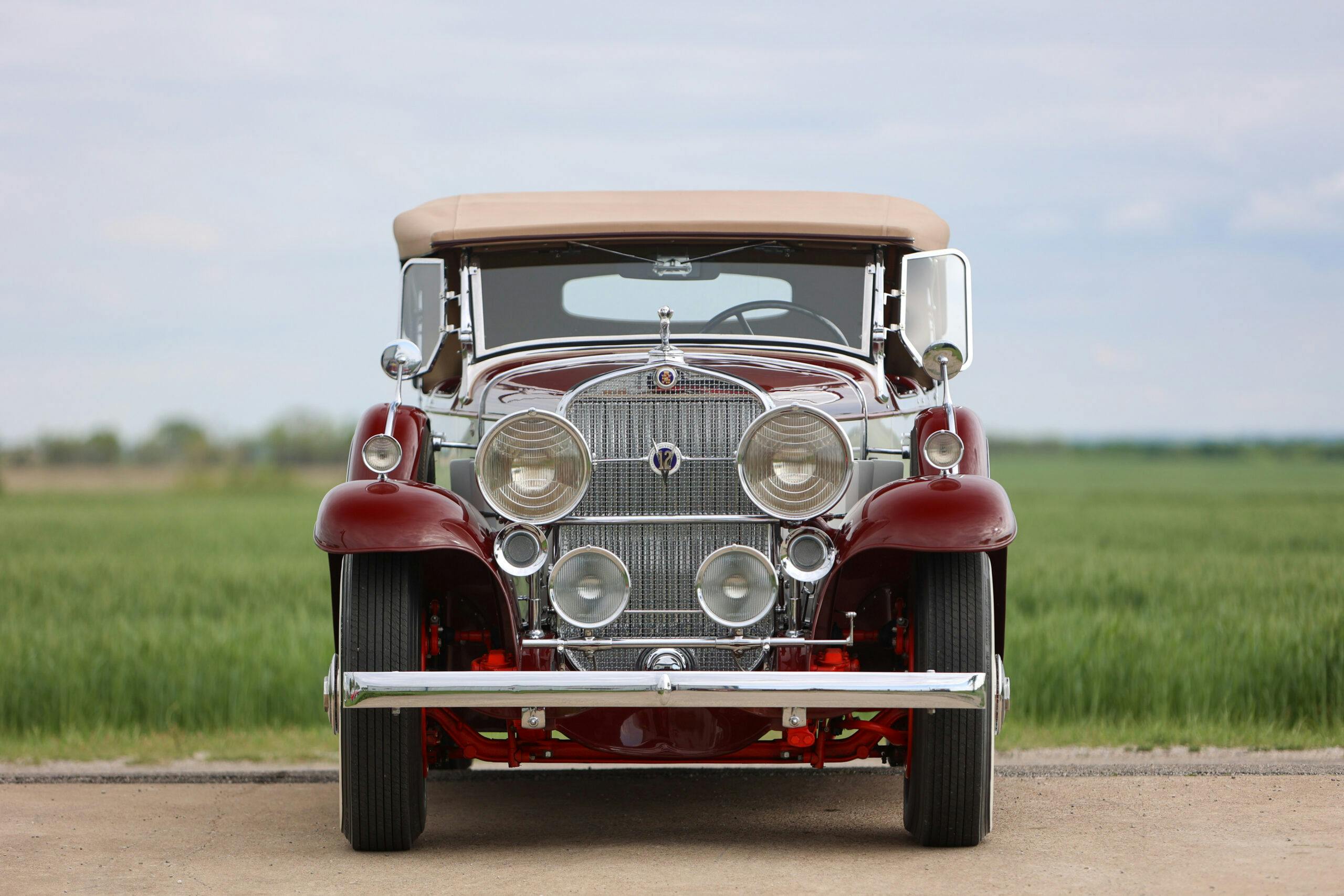
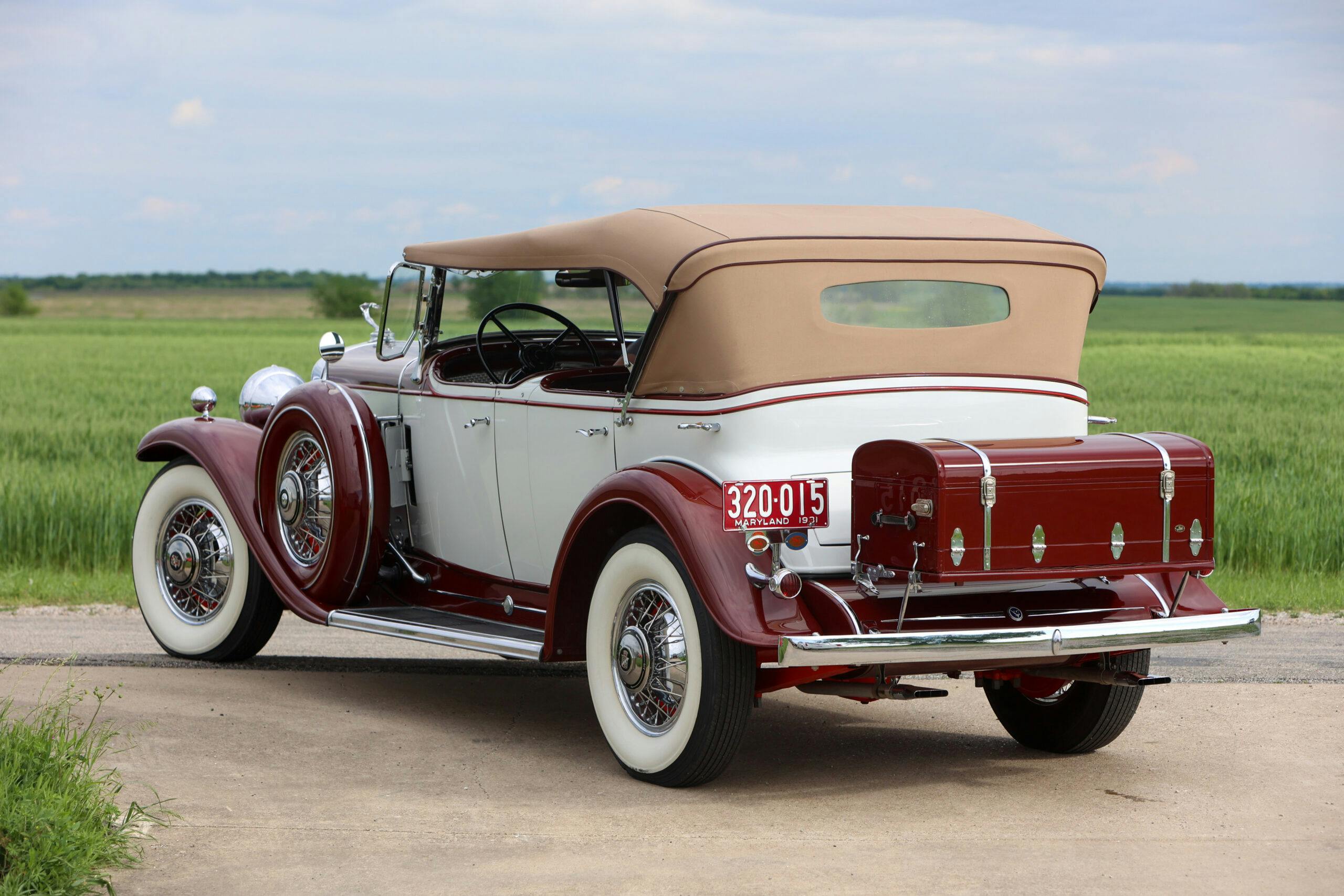
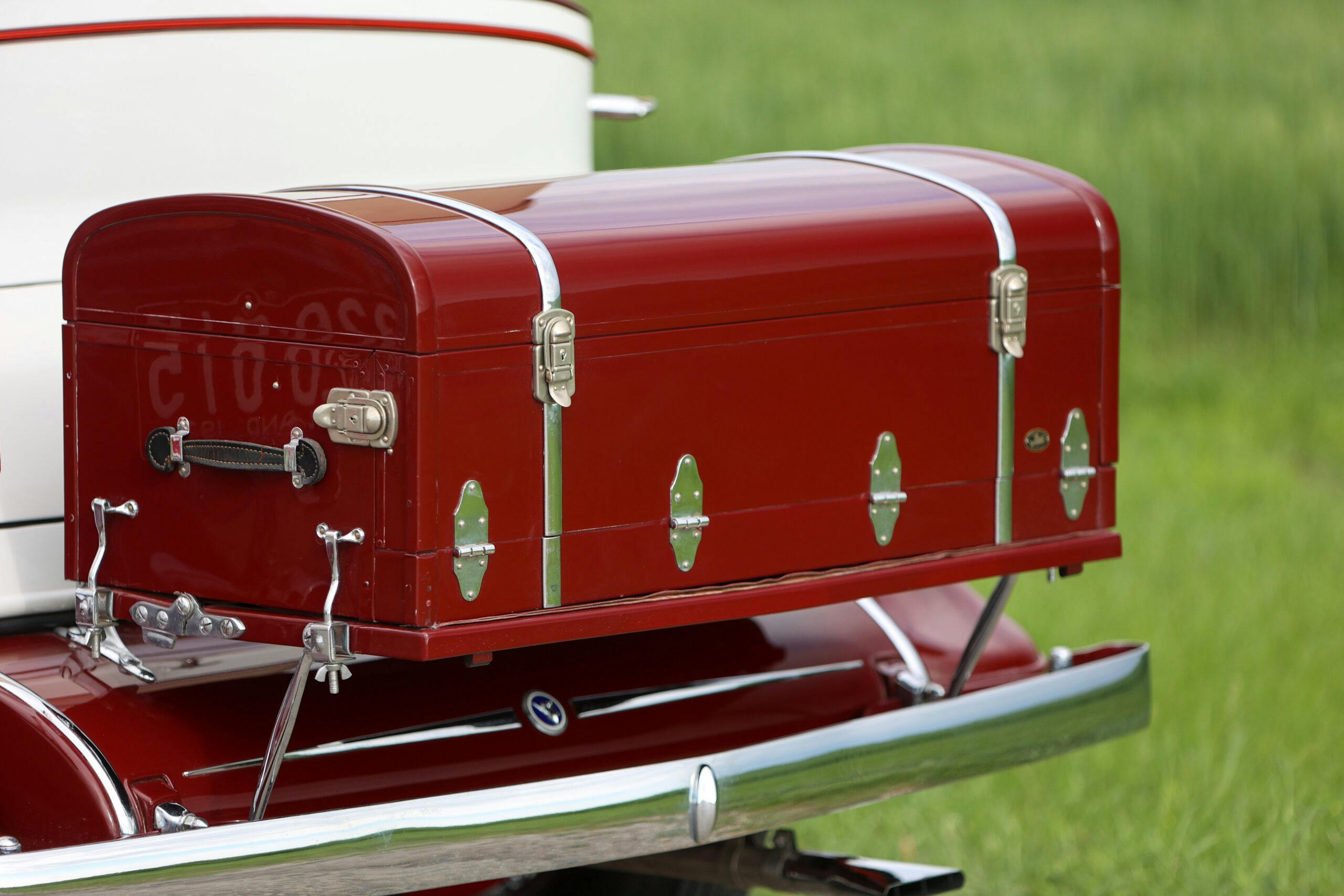
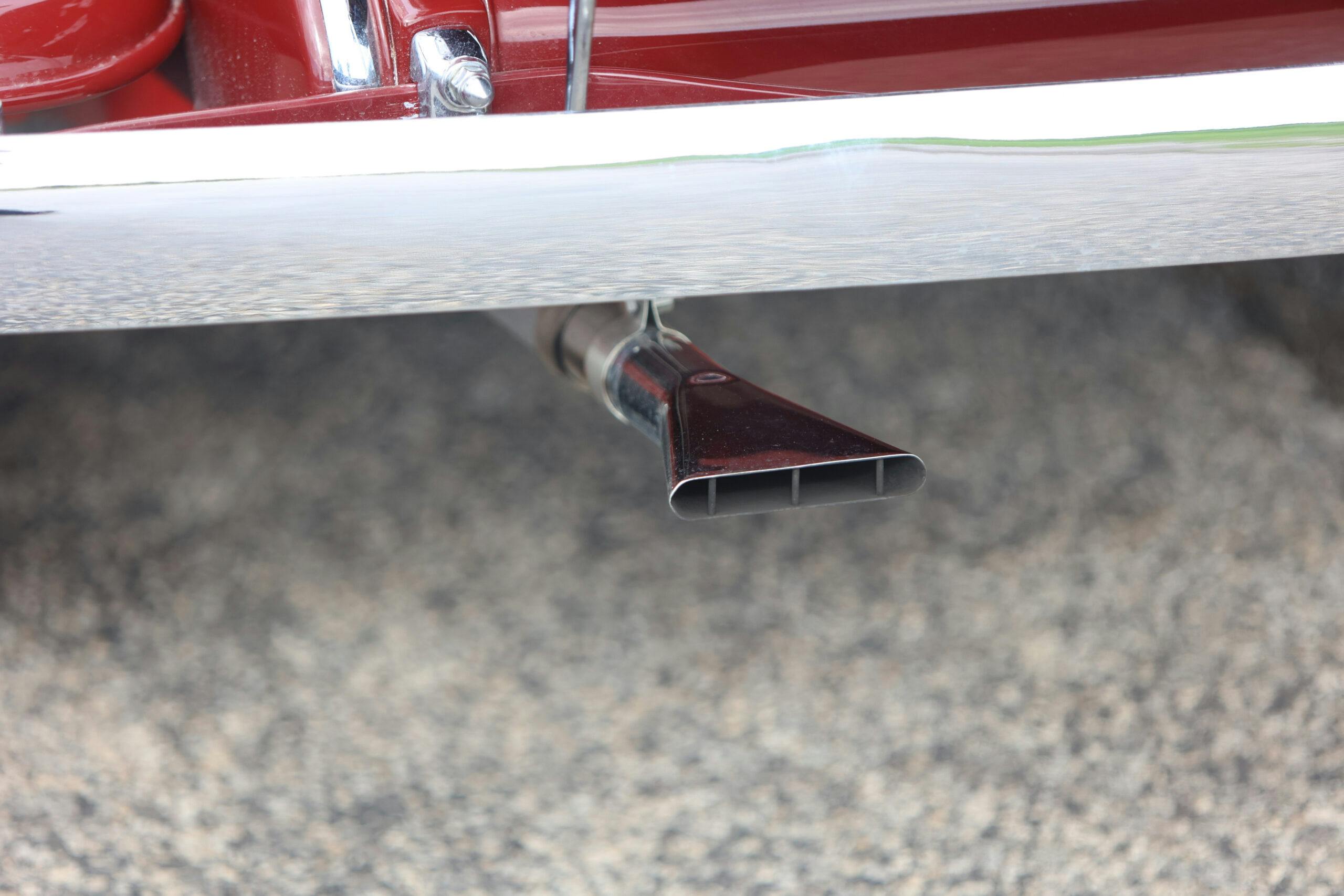

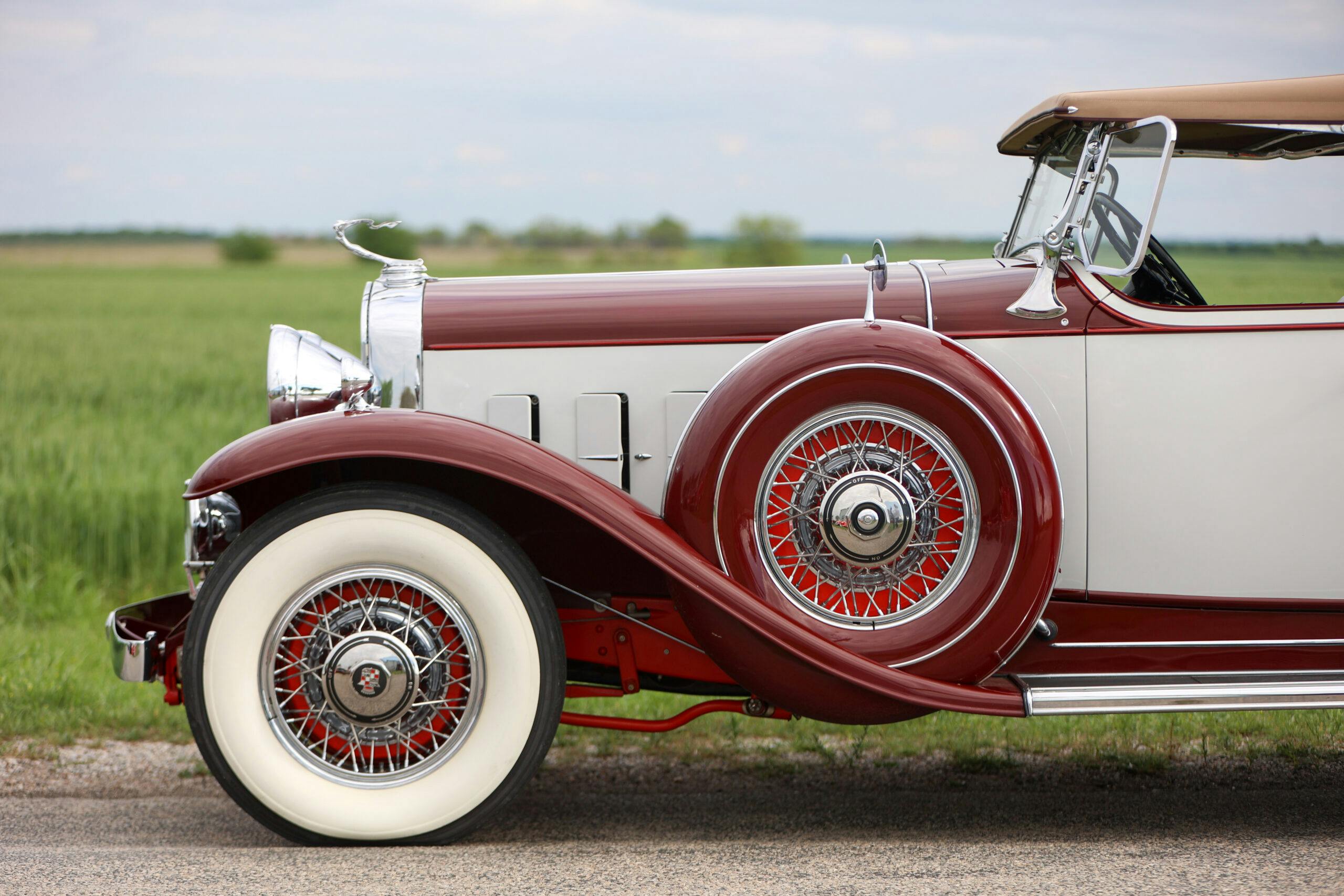
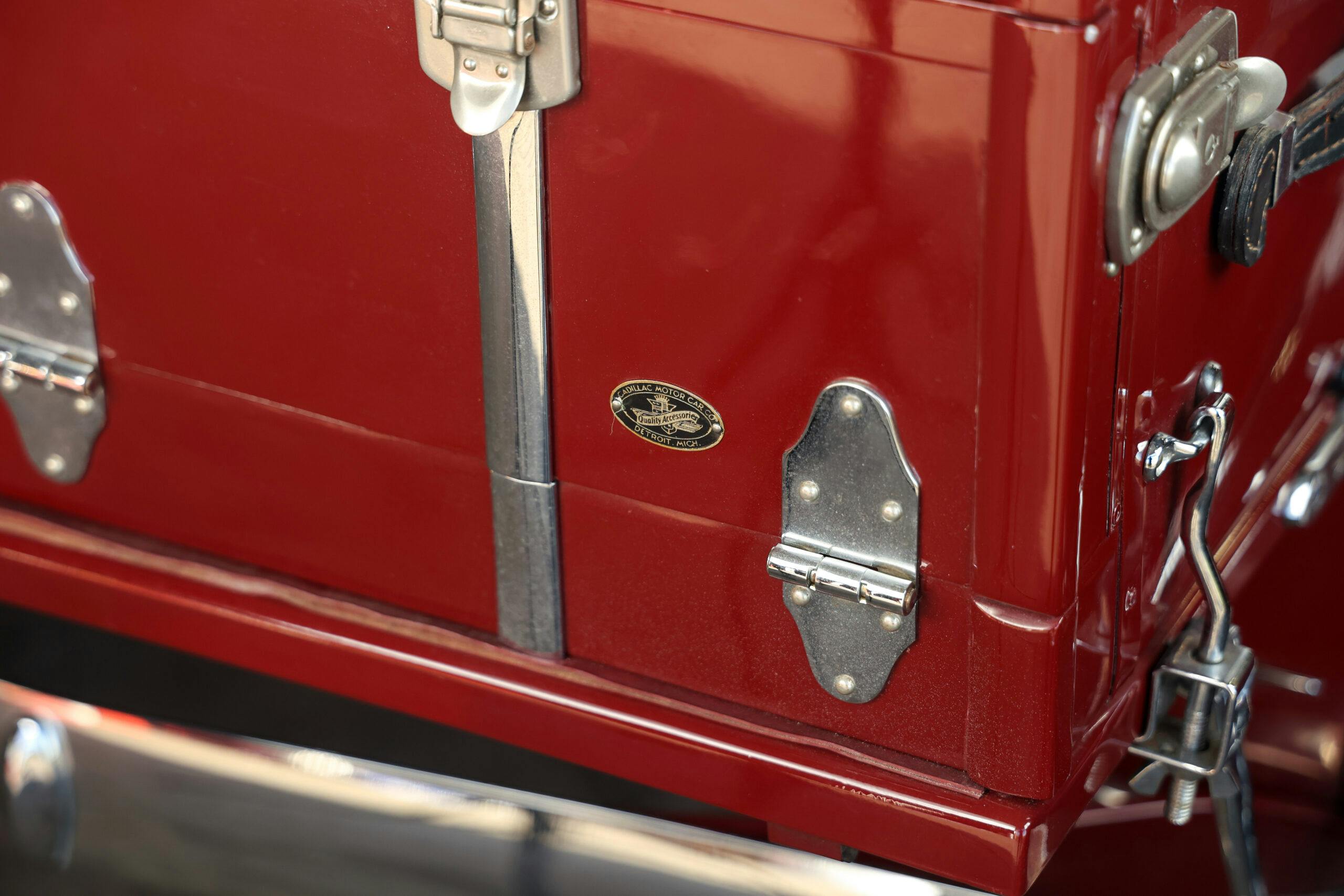

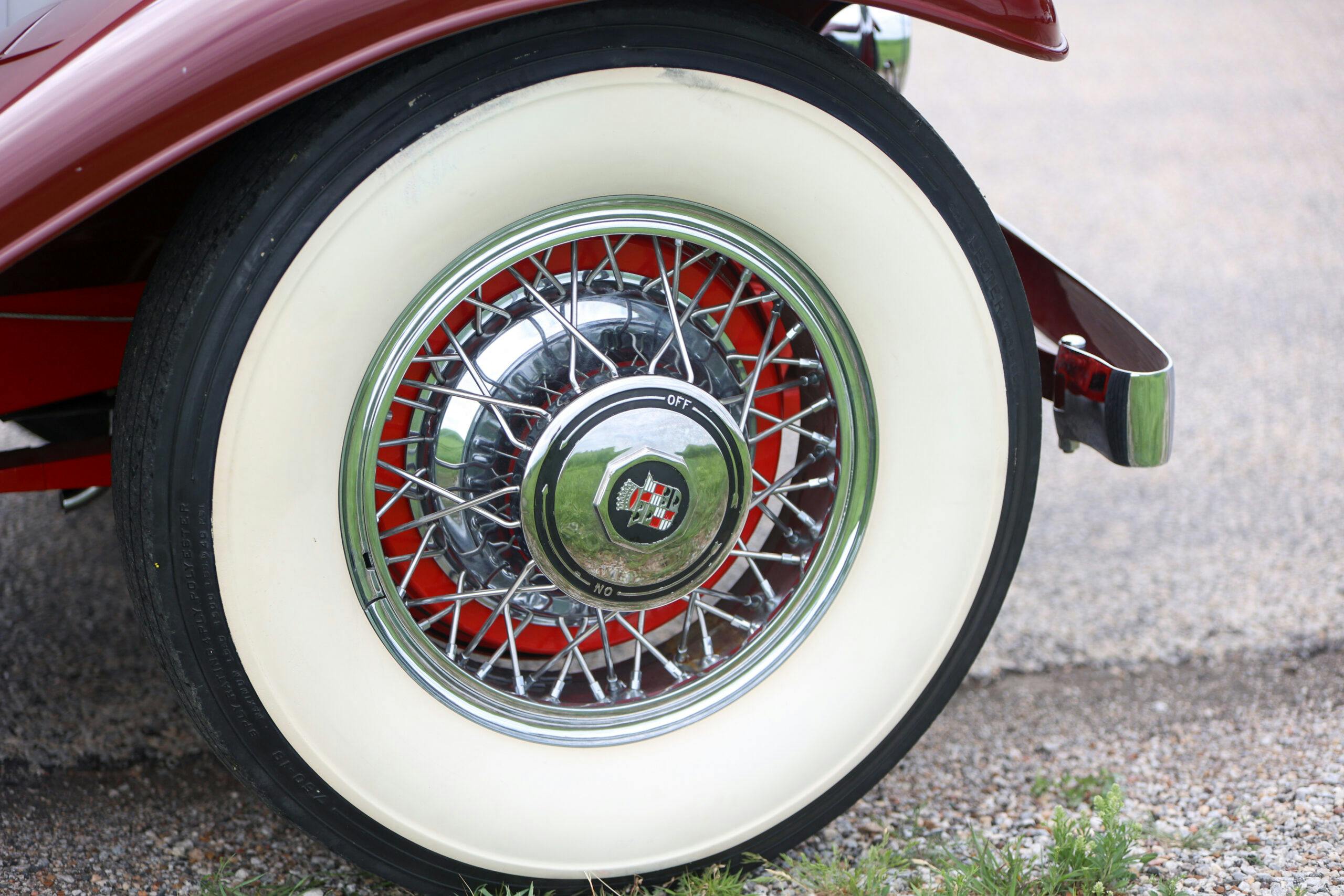
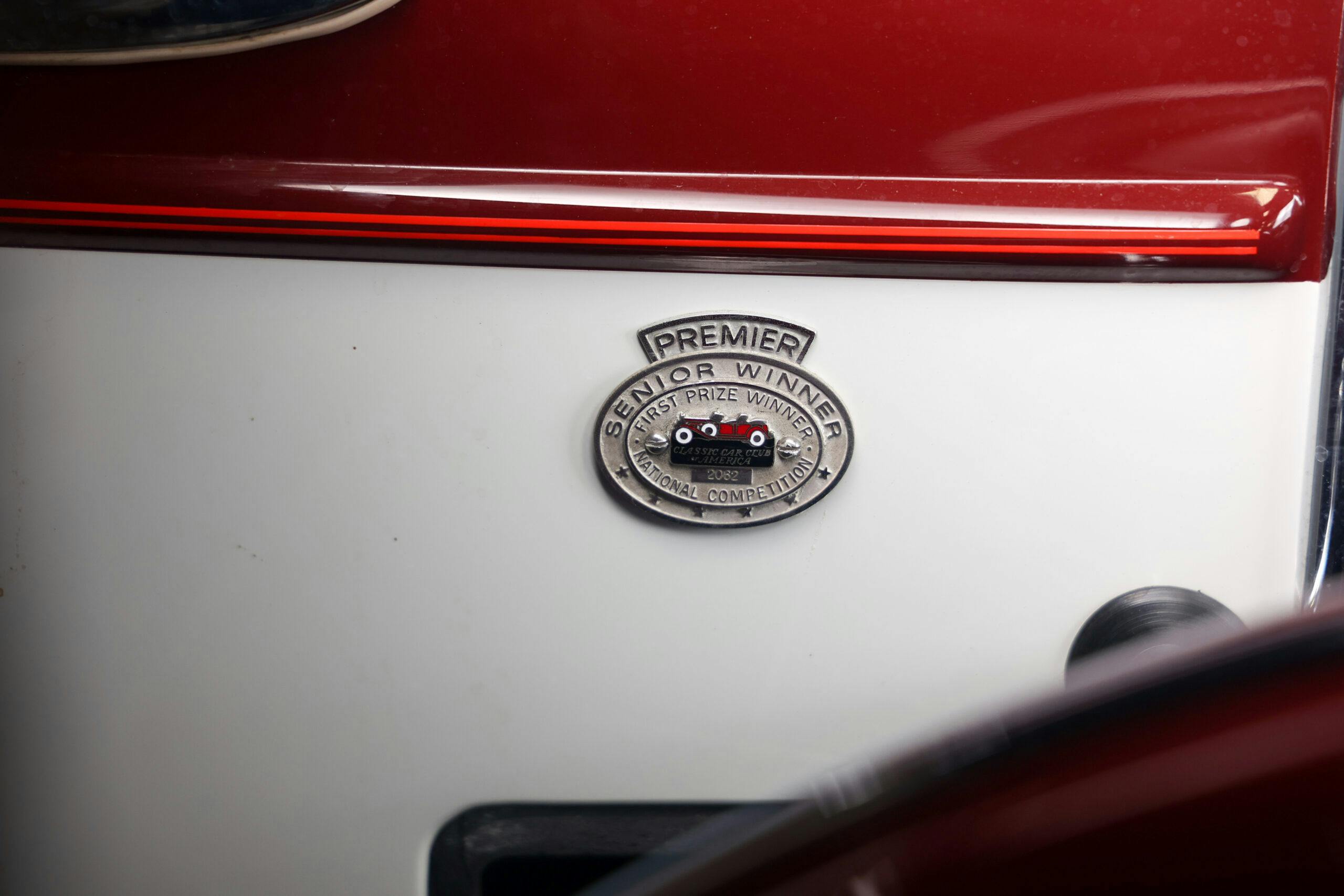
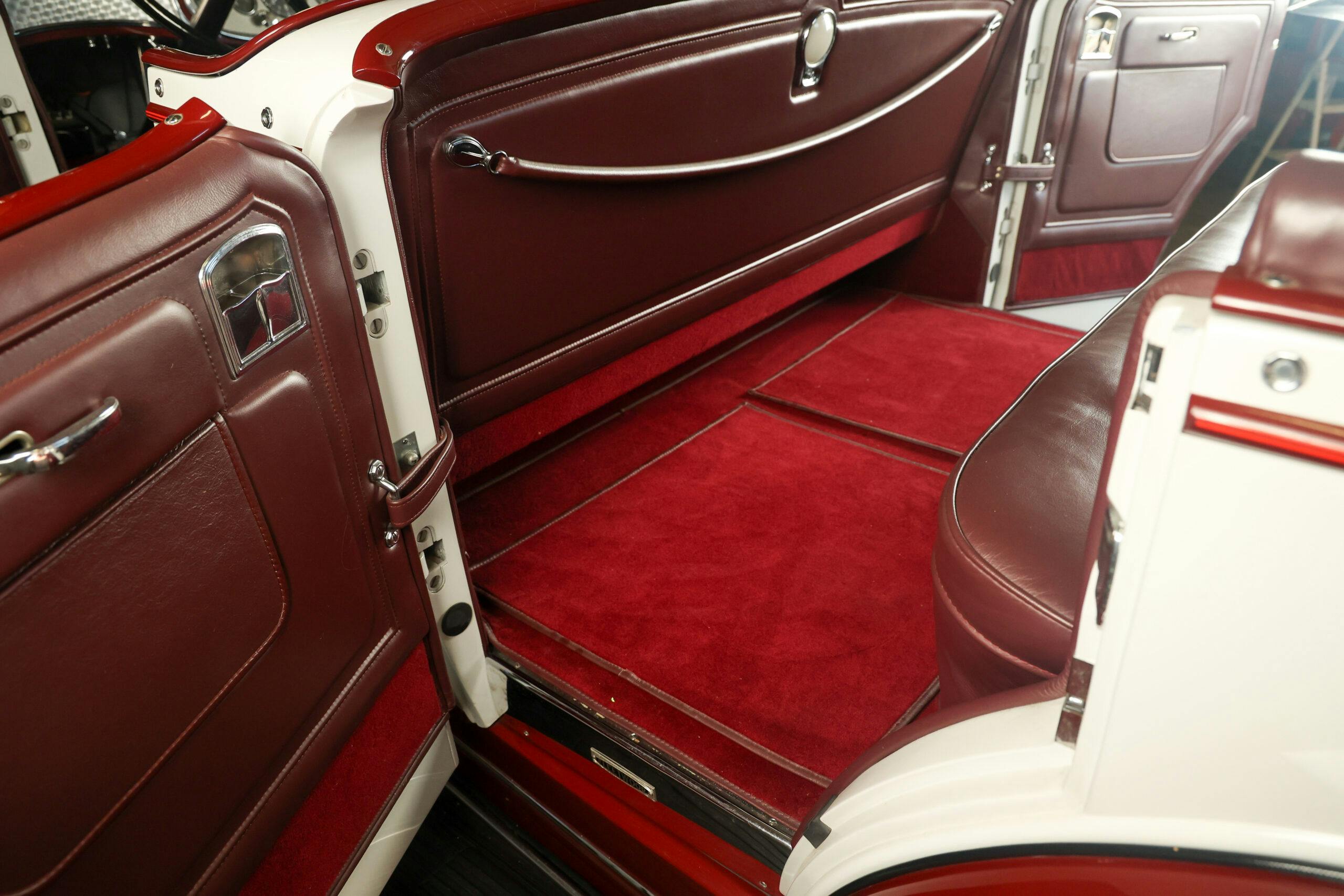
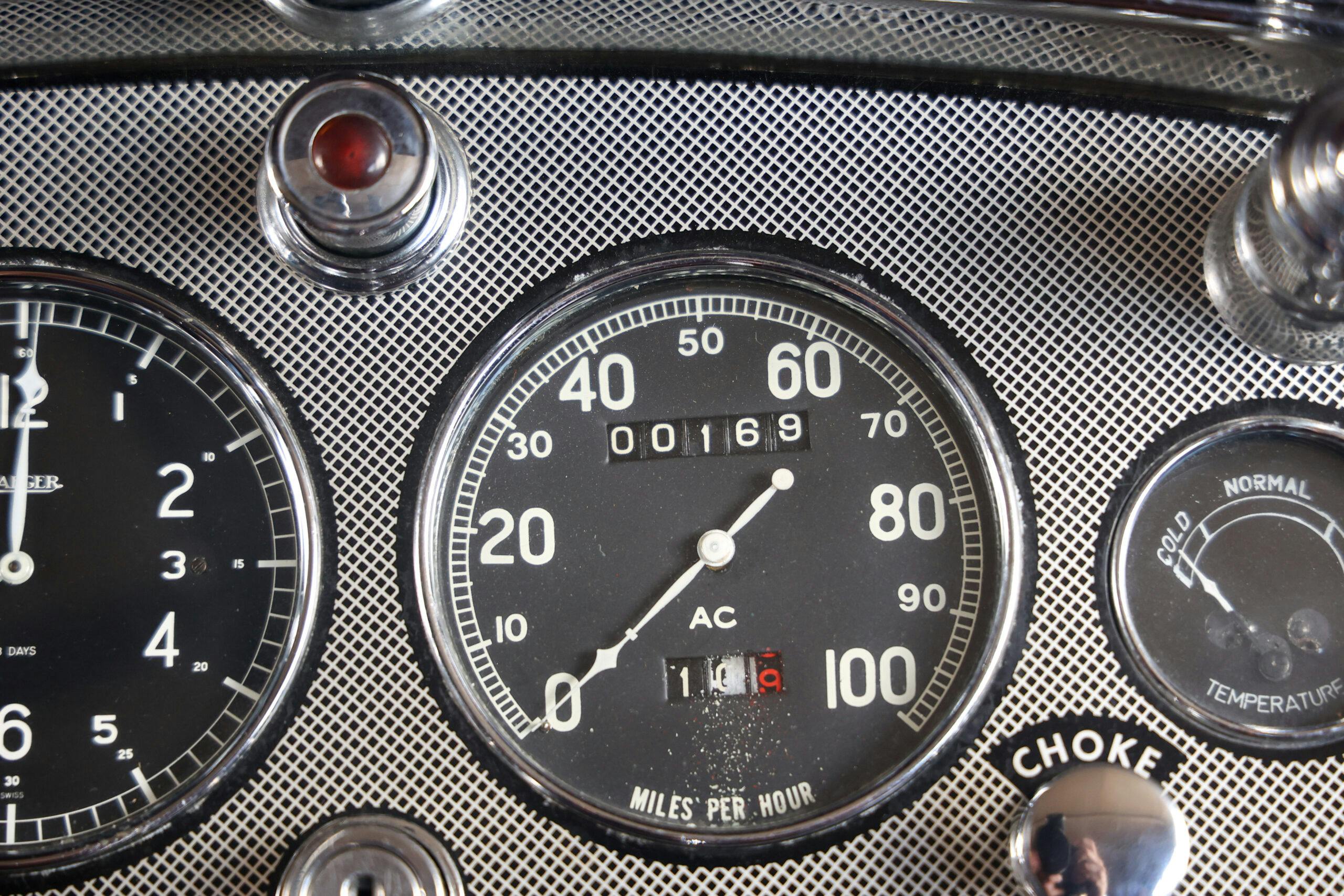
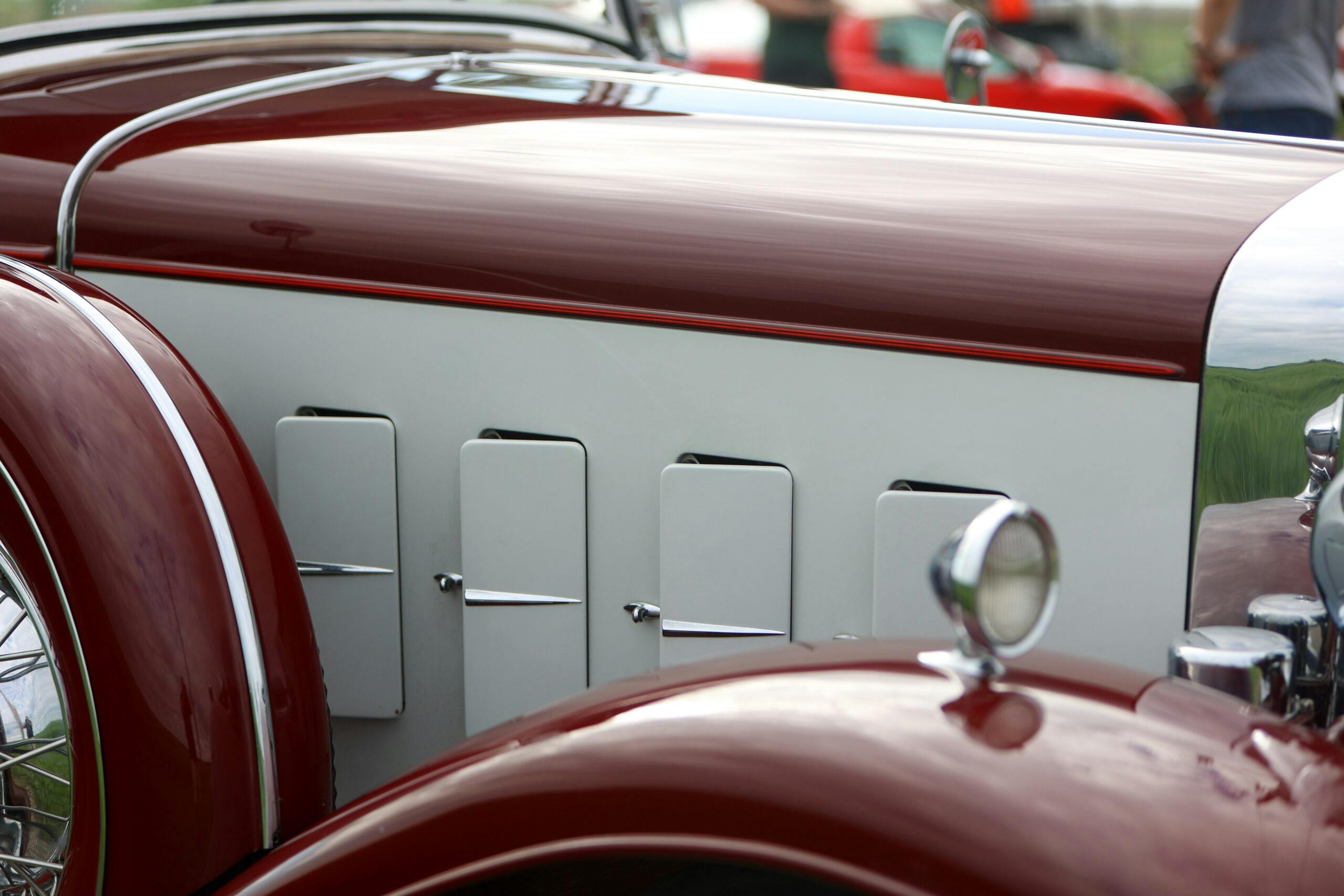


Beautiful car! No doubt way out of my price range, I hope it goes to a good home where it gets enjoyed and driven regularly.
Stunningly gorgeous car…
OK Folks, now you know where the term Trunk comes from.